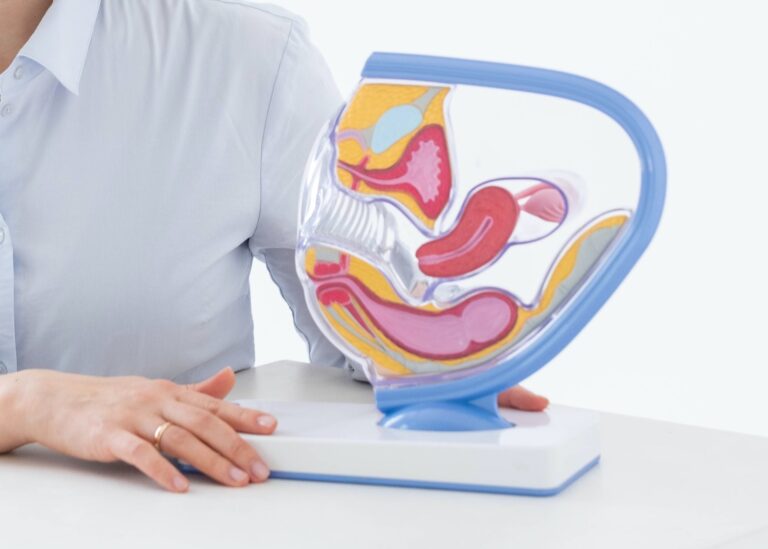A colposcopy is a procedure that looks at your cervix using a special magnifying device called a colposcope. The doctor may take a tissue sample for testing and might perform a cervical biopsy. To prepare for the exam, avoid putting anything in your vagina, like creams, and don’t have vaginal intercourse or use tampons.
The day of the exam
A colposcopy is an exam of the cervix, vagina, and vulva that is performed by a health care provider. It is usually done if you have abnormal pap smear results or if you have unexplained bleeding. It uses a medical instrument called a colposcope to magnify the cervix and detect any cell changes, infections, or precancerous cells. It is an outpatient procedure and usually only takes about 15-30 minutes.
During a colposcopy, your doctor may take a biopsy to check for cancerous cells or other abnormalities. This is a safe procedure, and you will feel a pinch when the tissue sample is taken. You may also experience some soreness and vaginal discharge for a day or two. It is normal to have spotting or dark-colored discharge after a colposcopy, and you should use pads instead of tampons.
During a colposcopy, your health care provider will probably apply a chemical solution to the biopsy site to limit bleeding. This will help to speed up the healing process. It is important to abstain from sexual activity and refrain from putting anything inside your vagina until the area has healed completely. If you have any problems during the recovery period, talk to your doctor. They will be able to provide you with more specific guidance on when it is safe to resume sexual activity.
The day after the exam
A colposcopy is a test that lets your doctor get a close look at your cervix. It is usually done when a pap smear shows abnormal cells or for other reasons. The exam takes 15-30 minutes. The procedure is similar to getting a Pap smear, but your doctor will use a special magnifying instrument called a colposcope instead of a microscope. The device looks like binoculars. Your doctor will swab your vulva with cotton and may put a solution, such as vinegar, in your vagina. This causes a burning or tingling sensation and helps the doctor see suspicious areas of tissue. The doctor can also take a biopsy during the colposcopy.
Your doctor will discuss the results of the procedure during an office visit or by telephone. The results of a biopsy will be available within a few days. If you have a negative result, you can resume sexual activity as usual. If you have a positive result, your doctor will recommend treatment to prevent the cancer from coming back.
Many women experience emotional distress after a colposcopy, which can affect their desire for sex and ability to have orgasm. The symptoms can be overcome with communication and self-care. It is also important to seek counseling if you are feeling anxious or distressed. In addition, some women experience physical discomfort during or after a colposcopy.
A week after the exam
The colposcopy is a test performed to examine the cervix and vagina. It is usually performed after an abnormal pap smear result and can identify precancerous cells and other abnormalities in the cervical tissue. It involves inserting a medical device called a colposcope into the vagina, which magnifies the cervical tissue. A sample of the tissue may also be taken for testing. During the exam, patients are often given medication to relax and ease pain.
After the procedure, women should refrain from sexual activity, but they can still kiss and touch each other. However, they should avoid putting anything in their vagina (including creams, douches and tampons) for 48 hours after the colposcopy. They should also avoid bathing or swimming. During this time, they should only use pads for any bleeding.
During a colposcopy, doctors will place a metal speculum into the patient’s vagina, which is the same procedure used during a Pap test. The speculum is then adjusted to allow the doctor to see the cervix more clearly. A vinegar solution is then put on the cervix, which makes it easier for the doctor to spot any abnormal areas. This process is relatively painless, but some women feel a slight pinch or cramping. If a biopsy is needed, the doctor will use another tool to take a sample of tissue.
A month after the exam
A colposcopy is an exam of your cervix and vulva, typically performed after an abnormal pap smear. It uses a special magnifying instrument to look for abnormal cells and other signs of disease. During the procedure, your doctor may also perform a biopsy of a suspicious area. It is an outpatient test that usually takes 15-30 minutes.
To prepare for the test, you should empty your bladder and avoid using vaginal medicines or tampons for 24 hours before the exam. You should also tell your doctor if you are pregnant or have any allergies to latex or iodine. You will need to undress from the waist down and wear a hospital gown for the procedure. You will lie on an exam table with your legs supported as if for a pelvic exam. Your healthcare provider will insert a tool called a speculum into your vagina to spread the walls apart and expose the cervix. She will then swab your cervix and vagina with an iodine or vinegar solution, which helps make any abnormal cells easier to see.
If your doctor decides to take a biopsy, you will have some bleeding from the sample site. This is normal and you should use pads or panty liners to protect yourself. You should also wait to have sex until the bleeding has stopped, as this will allow your cervix to heal. You should also contact your doctor if you have heavy or prolonged bleeding, or a fever.
See Also:






